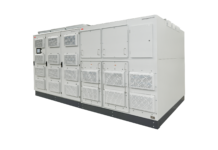Andrew Skelton, operations director, CENTIEL UK looks at maintenance and servicing contracts when purchasing a UPS.
When purchasing a UPS, just like a new car, it is important to remember that it will need to be maintained properly. In addition, an emergency contract to support the solution (think of this like a road-side recovery policy) will need to be in place for the lifetime of the UPS, which could be 10-15 years. Taking the ongoing costs for this into account is important, as is understanding what’s included within the contracted regular services plus the emergency callouts. (In other words, is the oil and filter cost included in the service? Or in an emergency, how long will you be left on the roadside; will they repair there and then or tow the car away?).
Cost is inevitably a key consideration with maintenance and support contracts, but minimising expenditure at the expense of protecting the critical load the UPS was installed to support is a false economy. Here’s a good example: a few years ago, I was involved in a project at a medical facility involving several UPS units which supported the load for an operating theatre. They were coming to the end of their life, and the client was looking for advice and a quote for the best option for the future of the facility.
There are two points for consideration here, firstly when agreeing a maintenance and support contract it is essential to use an organisation with the right capability (expertise) and spare parts to look after the UPS solution properly. In this example, the purchasing department had simply ‘chosen the cheapest’ option. However, those required to carry out the contract need to be experienced in maintaining in that model of kit. Otherwise it’s a bit like a Ford mechanic trying to fix a fault with a Rolls Royce (remember other brands are available!).
Secondly, it is important to consider the level of emergency support cover provided, as it can vary significantly. You could opt for maintenance only – this is where an engineer calls twice per year to make safety checks to the UPS. The next level up, is maintenance plus emergency call out where the client is charged for any replacement parts required. It’s worth looking into how quickly the engineer is contracted and required to arrive onsite to try and fix the issue. (Have you got road-side recovery for your new car, or will it be left on the A49 for a week until a replacement part arrives?)
Fully comprehensive maintenance and six hour on site response (can be 4 hours in special cases) where engineers are on call 365 days per year 24 hours per day, is usually the highest level of cover where replacement parts are also included within the cost of the contract.
Each installation is different, and the maintenance and emergency support contracts need to be appropriate to the criticality of the load being supported. The good news is that modular UPS can simply have modules swapped out and taken for repair off site and so downtime is minimised. For standalone systems, this is not so easy.
A few years ago, I came across one financial installation in the government sector where an engineer had been called in the middle of the night, as one of the paralleled stand-alone UPS had failed. To try and fix this he tried to use parts from the working UPS to identify the fault in the failed system and ended up damaging both units. This story sounds astonishing but things like this do happen ‘on the dark side of service’ when organisations use people who offer to do a ‘cheap fix’. It can end up costing far more in the long run.
So, the moral of the story is to take a detailed look into what’s included in the maintenance and support contracts of your new UPS installation. Be sure of what level of support you need and who will be providing it. Thought into the UPS’ upkeep and repair is as important to the overall protection of the critical load as its original purchase. The cost of such contracts can be significant, but they are an essential part of protecting the load and need to be brought into the calculations of the lifetime ownership of the system.



